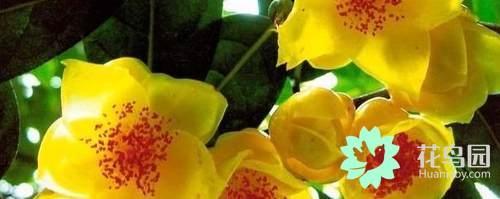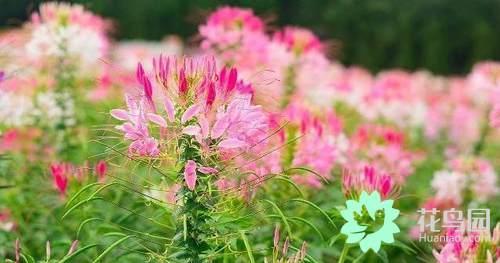Pot planting techniques of Golden scented Tea

Golden scented tea is a very ancient plant variety, very rare, the distribution area is very narrow, is a very precious rare species in the plant world. Golden scented tea not only has very high ornamental value, but also has certain medicinal value and economic value. It is a good practice to plant it as a family potted plant.
The flowers of Jinhua tea are golden and dazzling, and the petals are oily and shiny, as if they had been coated with wax. The blooming season of flowers, seen from afar, is not only delicate and beautiful, but also very elegant and beautiful. It is called Oriental Magic Tea by foreign friends, and has won the praise of "giant panda in the plant world" and "tea queen". So, how to grow family potted golden scented tea? Let's take a look at this:
1. Select the flowerpot
In the selection of flowerpots, the first thing to consider is that the proportion of flowerpots and potted seedlings should be appropriate, neither too large nor too small, moderate and meet the growth of potted seedlings.
2. Allocation of soil
Golden scented tea is not strict on the soil, but like the slightly acidic soil with good drainage, it is best to use garden soil, and then add an appropriate amount of pine needle leaves which have been rotten for one year.
3. Potting time
The pot time of golden scented tea should be in November in winter or in February-March in spring, and it should not be put in pot near budding and in high temperature climate.
4. The process of potting.
The pot of golden scented tea is basically the same as that of most other potted flowers, so I won't repeat them here. Take the camellia seedlings from the seedling plate, then transplant them directly on the pot, and cover the culture soil.
5. Watering skills
After the seedlings are finished in the basin, they need to be watered once, and be sure to pour enough water until there is water flowing out of the basin bottom drain, but usually water should be properly watered to keep the basin soil moist.
6. Maintenance measures
Because golden scented tea prefers warm and humid growth environment, so too cold or overheated maintenance environment is not conducive to its growth and development. Shade should be paid attention to in high temperature weather in summer, sufficient light can be provided in other seasons; when the winter temperature is too low, timely measures should be taken to prevent cold and keep warm to ensure that the temperature is kept between 3-4 ℃ in order to survive the winter safely.
- Prev

The drunken butterfly flower of summer night suitable for potted culture
Drunken butterfly flower is an annual herb, when the drunken butterfly flower is in full bloom, the raceme forms a plump flower ball, the small flowers are like dancing butterflies, very beautiful, there is no wild drunken butterfly flower in China, but each big.
- Next

A Thousand Miles Away: A Japanese's Chinese Rural Life
Everyone has the potential to create, even if the craft is small, but also has its own value to let the world see you unlimited possibilities In Chiba Prefecture, Japan, there is a person named "Six" originally named Ryotaro, when he was young, he liked to travel everywhere.
Related
- Wuhan Hospital Iron Tree Blooming Result Was Instantly Frightened by the Gardener Master
- Which variety of camellia is the most fragrant and best? Which one do you like best?
- What is the small blue coat, the breeding methods and matters needing attention of the succulent plant
- Dormancy time and maintenance management of succulent plants during dormancy
- Minas succulent how to raise, Minas succulent plant pictures
- What are the varieties of winter succulent plants
- How to raise succulent plants in twelve rolls? let's take a look at some experience of breeding twelve rolls.
- Attention should be paid to water control for succulent plants during dormant period (winter and summer)
- Watering experience of twelve rolls of succulent plants
- Techniques for fertilizing succulent plants. An article will let you know how to fertilize succulent plants.

